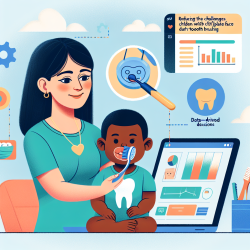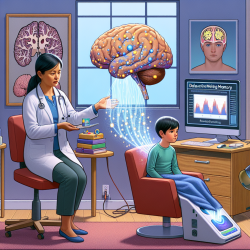Maintaining proper oral hygiene is a significant challenge for children born with a cleft lip and/or palate (CL/P). The recent research article "Experience of maintaining tooth brushing for children born with a cleft lip and/or palate" offers valuable insights that can help practitioners improve their skills and support these children more effectively. This blog post will summarize the key findings and suggest practical ways to implement these insights in clinical practice.
Key Findings from the Research
The study identified three primary themes:
- Parental Motivation: Parents of children with CL/P are highly motivated to maintain their children's oral health, but children's motivation is inconsistent.
- Parental Role: Parents are the primary enablers of their children's tooth brushing habits, often adapting their approaches to suit their child's needs.
- Obstacles: Various obstacles, including CL/P-related issues, forgetting, and childhood illnesses, hinder regular tooth brushing.
Practical Insights for Practitioners
1. Enhance Parental Support
Parents are the main drivers of their children's tooth brushing routines. To better support them:
- Provide tailored advice on how to integrate tooth brushing into daily routines.
- Encourage the use of positive reinforcement and fun activities to make tooth brushing enjoyable for children.
- Offer guidance on how to manage resistance and reluctance from children.
2. Address Specific Challenges
Children with CL/P face unique challenges that can complicate tooth brushing:
- Provide specific strategies for dealing with discomfort and pain related to CL/P.
- Offer solutions for managing misaligned teeth and other oral health issues common in children with CL/P.
3. Develop Comprehensive Interventions
While parental motivation is high, the study suggests that additional support is needed to translate this motivation into consistent tooth brushing habits:
- Design interventions that include both educational and practical components.
- Use behavior change techniques to help parents and children overcome obstacles and establish lasting routines.
Encouraging Further Research
The findings from this study highlight the complexity of maintaining good oral hygiene in children with CL/P. Practitioners are encouraged to delve deeper into this area by:
- Conducting further research to explore additional barriers and facilitators of tooth brushing.
- Investigating the effectiveness of various intervention strategies in different settings.
Conclusion
By implementing the insights from this research, practitioners can significantly improve the oral health outcomes for children with CL/P. Providing comprehensive support to parents and addressing specific challenges will help ensure that these children maintain good oral hygiene, leading to better overall health and well-being.To read the original research paper, please follow this link:
Experience of maintaining tooth brushing for children born with a cleft lip and/or palate.










